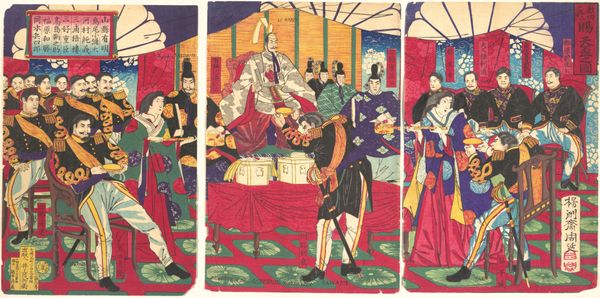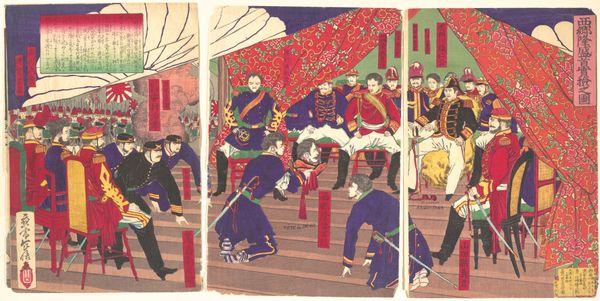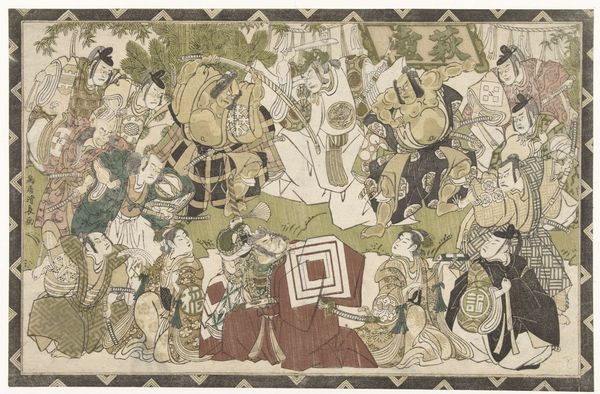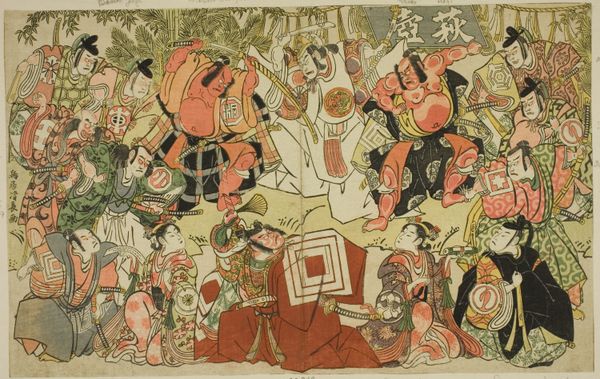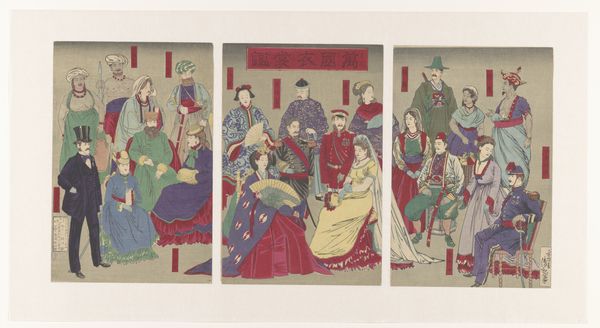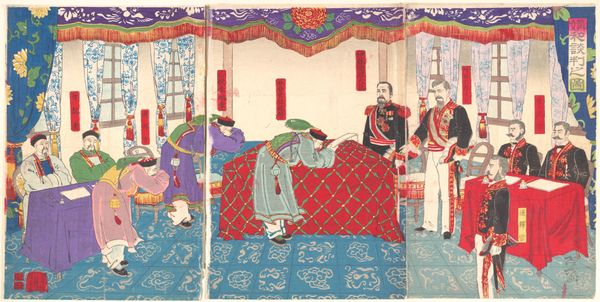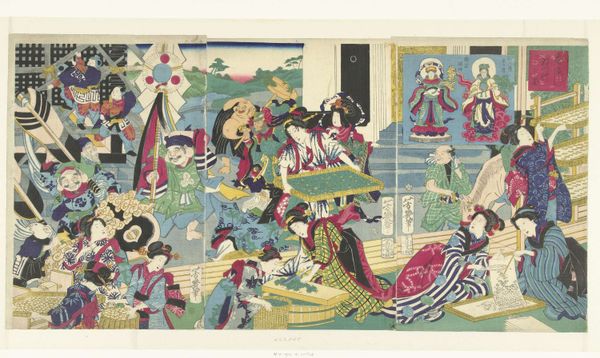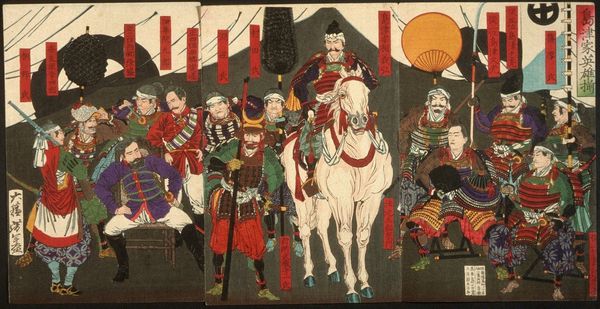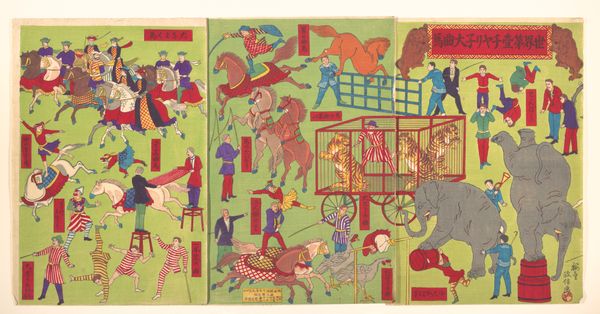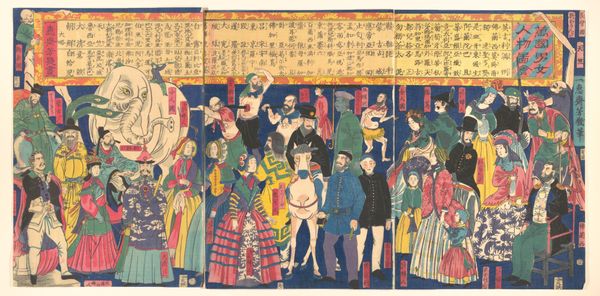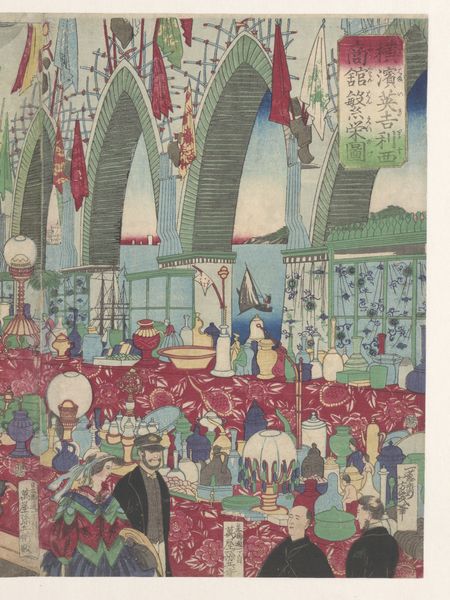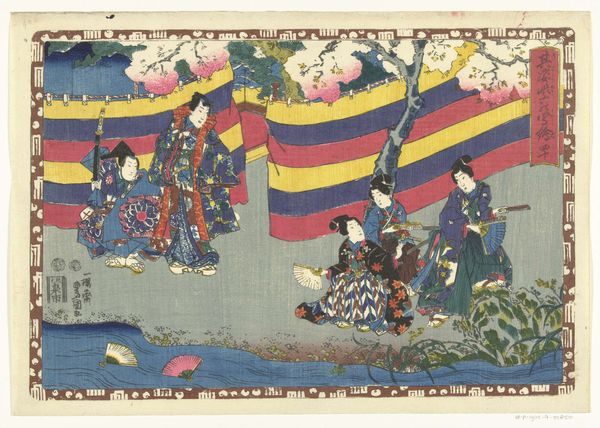
Dimensions: Oban; each panel: 13 3/8 x 9 1/4 in. (34 x 23.5 cm)
Copyright: Public Domain
Editor: We're looking at "Civil and Military Officers," a woodblock print triptych made around 1877 by Toshimasa, now at the Metropolitan Museum of Art. It’s such a detailed, vivid group portrait; the colors are captivating. What strikes you about it? Curator: Consider the Meiji period in which this print was produced. Japan was rapidly industrializing and modernizing. What does it mean for an artist to employ a traditional medium like woodblock printing to depict such a subject? Think about the labor involved: the artist's design, the carver's skill, and the printer's hand all contribute to the final product. Editor: So, you are saying that the choice of material and labor is as important as the people being represented. It looks like a very modern scene in terms of clothing... Curator: Exactly. How does the adoption of Western styles of dress and military uniforms speak to this moment of modernization? Ukiyo-e prints were becoming commercialized objects. What role did these images play in shaping public perceptions of the ruling class and these new global relationships? What is this triptych trying to *sell* to its consumers? Editor: So it is not just about the elite but how they wanted to be seen through mass production and popular art? Curator: Precisely. We see here a deliberate display of power and social reform circulated through a mass medium. Consider, too, who had access to these prints and what that says about class and consumption. Editor: Fascinating. Thinking about it that way changes my perspective entirely. It's less about the individuals portrayed and more about the message, manufacturing, and circulation of the print itself within a changing society. Curator: And about what a print can do.
Comments
No comments
Be the first to comment and join the conversation on the ultimate creative platform.
